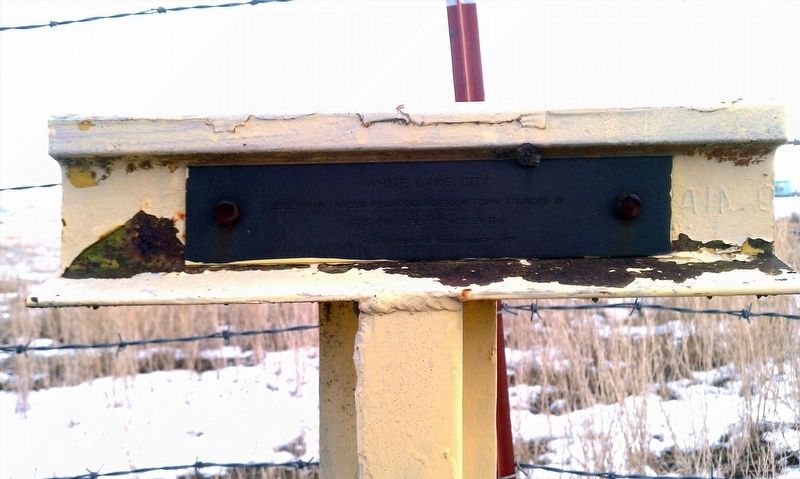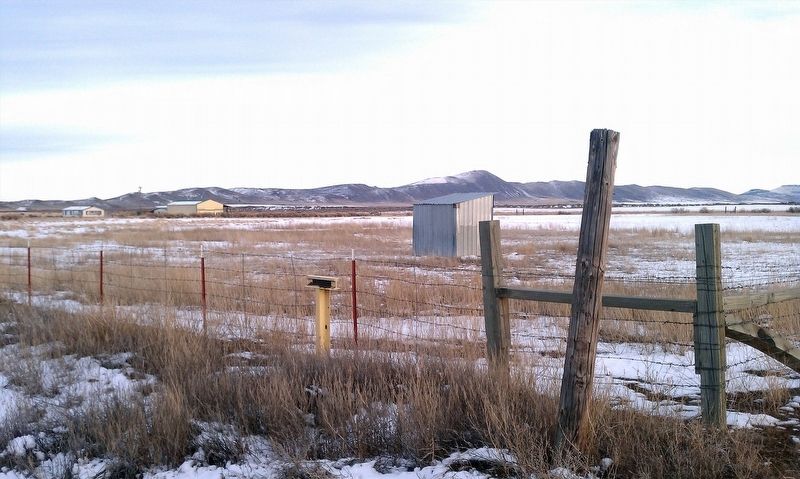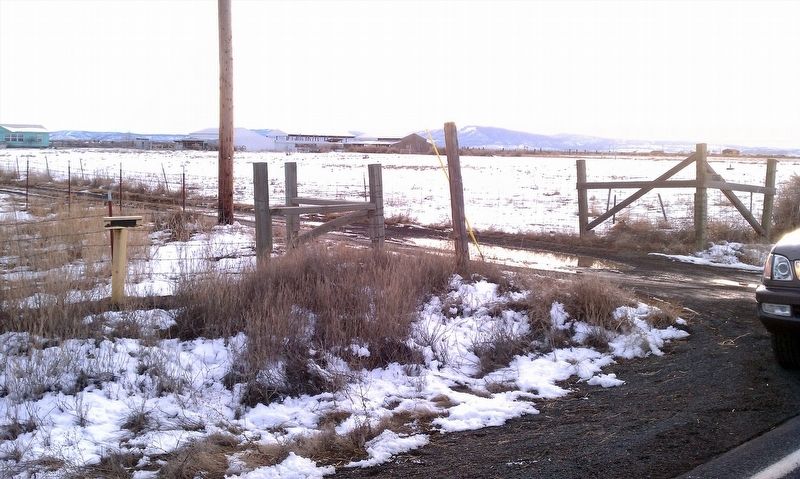Klamath Falls in Klamath County, Oregon — The American West (Northwest)
White Lake City
1905. Out of existence by 1918.
Erected 1978 by Klamath County Historical Society.
Topics. This historical marker is listed in this topic list: Settlements & Settlers. A significant historical year for this entry is 1905.
Location. 42° 0.57′ N, 121° 38.666′ W. Marker is in Klamath Falls, Oregon, in Klamath County. Marker is on Lower Klamath Lake Road, on the right when traveling east. Touch for map. Marker is in this post office area: Klamath Falls OR 97603, United States of America. Touch for directions.
Other nearby markers. At least 8 other markers are within 6 miles of this marker, measured as the crow flies. Applegate Trail - Clammett Lake (approx. 2.8 miles away in California); Lower Klamath National Wildlife Refuge (approx. 3.6 miles away in California); The Applegate Trail (approx. 4.3 miles away); The Stone Bridge (approx. 4.3 miles away); a different marker also named Stone Bridge (approx. 4.3 miles away); Camp Tulelake (approx. 4.9 miles away in California); Dennis Crawley Cabin (approx. 5 miles away); The Ranch of J. Frank Adams (approx. 5.1 miles away).
Regarding White Lake City. From the booklet Klamath Echoes - Klamath Basin 1977: In 1905 when the History of Central Oregon was published "there was only one 'dead town (Merganser -- Editor) in Klamath County." At the same time on the northern shores of White Lake barely inside Oregon, or one mile south and two miles west of the center of Merrill, Oregon, Klamath's newest boom town was in the process of springing into existence. White Lake City was named for the lake upon whose shores it was to flourish for a short time then pass into oblivion.
White Lake itself was so named because of the color of the lake bottom, which apparently consisted of some white diatomaceous material. The lake was a very shallow extension of the original Lower Klamath Lake system. A large percentage of the White Lake area was south of the Oregon-California State Line and therefore in California.
Beginning about 1903 with the completion of the Adams Tule cut from Lower Klamath Lake to White Lake and beyond as an irrigation system for the Merrill-Tul Lake country, boats were able to reach the lake and navigate most of its area. Merrill Landing was established at the extreme southeastern side of the lake through which a considerable amount of freight passed in early times. There seems also to have been a landing along the north shore of White Lake. At least a few years ago, two posts and a cross-piece of timber still remained of this little used landing.
Today, eliminated by irrigation and drainage projects, what was once White Lake is bisected by paved California Highway #161, "State Line Road," connecting U.S. Highways #139 and #97. White Lake City lay north of this road and north of the curving north shore of the lake. The nucleus of the town was in Section 16, Township 41 South, Range 10 East, the northeast corner lying one-half mile west of the junction of the Merrill Pit and Lower Klamath Lake Roads.
Credits. This page was last revised on January 18, 2018. It was originally submitted on January 15, 2018, by Douglass Halvorsen of Klamath Falls, Oregon. This page has been viewed 348 times since then and 41 times this year. Photos: 1, 2, 3. submitted on January 15, 2018, by Douglass Halvorsen of Klamath Falls, Oregon. • Bill Pfingsten was the editor who published this page.


